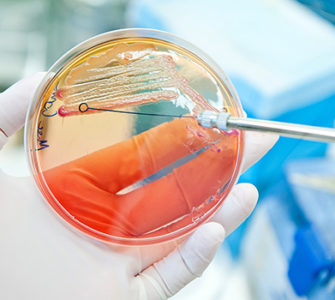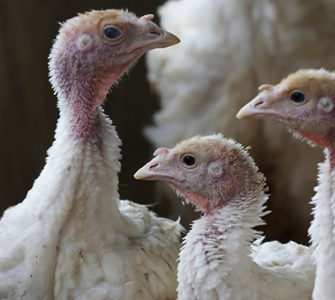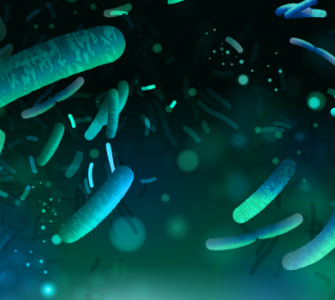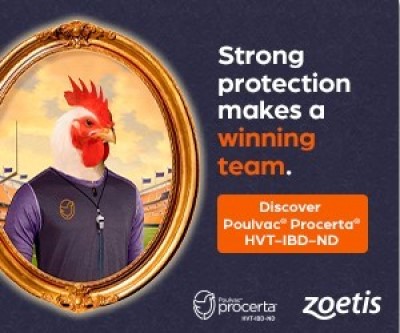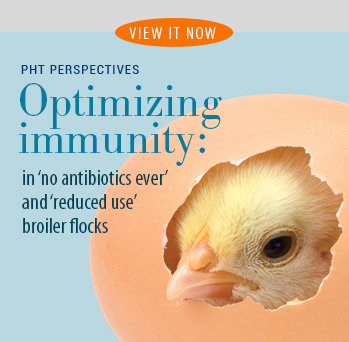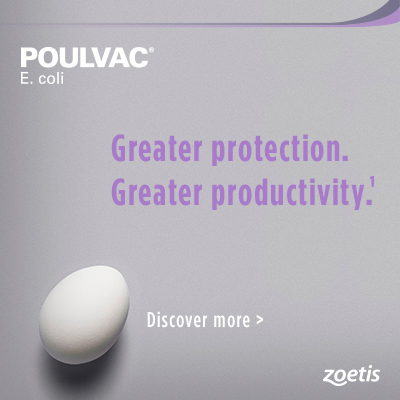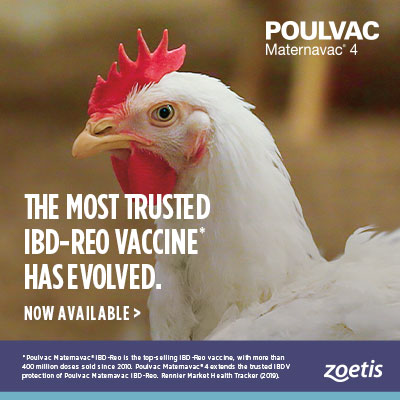Colibacillosis control in egg-laying chickens: A new tool in our toolbox
By Paul McMullin, MVB, MSc, DPMP, DiplECPVS, FRCVS
Consultant Veterinarian
Poultry Health International
Colibacillosis is among the most commonly diagnosed infectious diseases of farmed poultry, often appearing as a complication of yolk sac infections, upper respiratory disease or immunosuppression. It also causes a significant proportion of mortality in adult commercial layers, as well as in breeding chickens.
It is caused by invasion of pathogenic strains of Escherichia coli into extra-intestinal tissues. In adult females, the oviduct and peritoneum are particularly affected. The most common lesions induced in these are peritonitis and salpingitis (inflammation of the oviduct), but some birds have inflammation of the pericardium, deposits of pus on the liver or inflammatory changes in the ovary.
Routes of infection
Although the disease has been known for over 100 years, it was only in the 1960s that it was identified that particular serotypes of E. coli were more likely to cause the condition, and we now refer to the condition as being caused by avian pathogenic strains of E. coli (APEC). These bacteria can be carried in the intestine of healthy birds. In the adult laying hen, it is often unclear exactly what has triggered tissue invasion.
It may be readily reproduced by inoculating pathogenic bacteria in the trachea or intra-vaginal routes. This, and the pattern of lesions seen, suggest that the natural routes of infection of these tissues are either via the respiratory tract (and hence via the bloodstream or airsacs, known as descending infection) or via the reproductive tract (ascending infection). The condition is sometimes referred to as yolk peritonitis because of its association with active egg laying, but this is a misnomer — it is not reproduced by injecting sterile yolk into the abdominal cavity.
The disease in adult laying hens can range from acute losses of birds in good condition which had recently been in lay, to chronic ill health with significant weight loss and no egg production. Birds with severe salpingitis are usually low in bodyweight (discounting the enlarged oviduct).
Control of adult colibacillosis
Effective control of the disease has long been based on control of primary immune-suppressive diseases and respiratory infections by comprehensive vaccination in the rearing phase. We also now understand that avoiding pecking-related damage to the vent and good husbandry to support normal ovary and oviduct activity are important.
Antimicrobial medication in accordance with sensitivity testing of the particular strain causing disease can be helpful. However, response to treatment is often disappointing, and even where there is a reduction in mortality initially, the problem can return in the following weeks and months.
In most markets, there is an increasing focus on avoiding unnecessary use of medication and ensuring that all use is responsible. In practice, very few antimicrobials are available for use with an egg withdrawal period of zero in many countries. Disposal of eggs from the food chain during a course of medication and a period of egg withdrawal imposes a high economic barrier to the use of effective medication.
The development of Poulvac® E. coli, an Aro-A-deleted live vaccine, led to its authorization in many countries for laying and breeding pullets in rear in 2012. This was a significant advance in the control of the condition, with the vaccine licensed to protect against several commonly isolated APEC serotypes. However, in Europe its approval did not allow use in birds in lay or within 6 weeks before the onset of the laying period. This is a standard requirement when safety data have not been presented in relation to a vaccine’s use during the laying period.
The claimed duration of immunity is 12 weeks. While it seems likely that there is some practical immunity for much longer than this, it is unlikely that it will persist unchanged for the full laying period of more than a year.
Licensing update
Since Poulvac E. coli has been available, there have been anecdotal reports that vaccination or revaccination of flocks in the laying phase has appeared to be helpful in flocks suffering higher-than-normal losses as a result of colibacillosis. Zoetis was therefore encouraged to reassess the possibility of removing the restriction of its use in lay.
The resulting project collated information from two new laboratory-based safety studies using 10x overdose, one field trial using standard dose, data from field experience of its use in lay in three countries, and pharmacovigilance. This work suggested that Poulvac E. coli does not adversely affect the development of reproductive organs or egg production. Dissemination to eggs was also investigated in the field study and was not detected.
Following review of these new data by the European Medicines Agency and the Veterinary Medicines Agency in the UK, these authorities have agreed to the removal of the contra-indication to its use during lay or within 6 weeks of starting lay. The existing nil withdrawal period for eggs remains in place.
New opportunities
As with all vaccines, complete protection is not achieved, so it remains important to continue basic good practices of disease control and management. The change in the license does, however, allow veterinarians to advise farmers in implementing new vaccination schedules with Poulvac E. coli. In one sense, it becomes a new tool in our toolbox. It may be used in different ways.
The timing of vaccination in rear may now be adjusted to allow application in the 6 weeks prior to the start of lay. The data-sheet change makes more “slots” available in the vaccination program.
The second opportunity would be to vaccinate partway through lay to help extend the duration of protection, where farm history suggests that this may be beneficial.
The third opportunity would be to react to the occurrence of disease in a particular flock which is not responding to management intervention and/or medication. Currently affected birds are unlikely to benefit from this vaccination, but a sustained disease reduction has been seen in some flocks from about 10 days after vaccination.
After almost a decade of experience in using Poulvac E. coli, both veterinarians and poultry farmers now have the opportunity to use it to help deliver improved health in the late rear and the laying period of layers and breeding chickens.
All trademarks are the property of Zoetis Services LLC or a related company or a licensor unless otherwise noted.
©2022 Zoetis Services LLC. All rights reserved. MM-17519
Posted on May 25, 2022





